Table of Contents
WHAT IT IS?
- The Indian space program began in 1962. In 1969 the Indian space Research Organization (ISRO) was set up and headquartered in Bangalore (presently Bengaluru) for the purpose of rapid development of space technology and its application. In 1972, space commission was established. In 1975, India launched its first satellite, Aryabhata, and thus entered the space age. Over the last four and half decades, the Indian space programme has made impressive progress through a well integrated, self:reliant programme
HISTORY
- Modern space research in India is most visibly traced to the 1920s, when the scientist S. K. Mitra conducted a series of experiments leading to the sounding of the ionosphere by application of ground-based radio methods in Calcutta.
- Later, Indian scientists like C.V. Raman and Meghnad Saha contributed to scientific principles applicable in space sciences
- .However, it was the period after 1945 that saw important developments being made in coordinated space research in India.
TWO SUPERHEROES OF INDIA
- Organised space research in India was spearheaded by two scientists: Vikram Sarabhai—founder of the Physical Research Laboratory at Ahmedabad—and Homi Bhabha, who established the Tata Institute of Fundamental Research in 1945.
- Initial experiments in space sciences included the study of cosmic radiation, high altitude and airborne testing, deep underground experimentation at the Kolar mines and studies of the upper atmosphere.
- In 1950, the Department of Atomic Energy was founded with Bhabha as its secretary. The department provided funding for space research throughout India.In 1954, the Uttar Pradesh state observatory was established at the foothills of the Himalayas.The Rangpur Observatory was set up in 1957 at Osmania University, Hyderabad.
PROGRAM
- Space research was further encouraged by the technically inclined Prime Minister of India, Jawaharlal Nehru.In 1957, the Soviet Union launched Sputnik 1 and opened up possibilities for the rest of the world to conduct a space launch
- .The Indian National Committee for Space Research (INCOSPAR) was set up in 1962 by Jawaharlal Nehru, first Prime Minister of India.Indian Space Research Organization (ISRO), set up at Ahmadabad in 1969 by Prof. Vikram Sarabhai as chairman.
OBJECTIVES
- Since inception, the Indian space programme has been orchestrated well and had three distinct elements such as, satellites for communication and remote sensing, the space transportation system and application programmes.Two major operational systems have been established – the Indian National Satellite (INSAT) for telecommunication, television broadcasting, and meteorological services and the Indian Remote Sensing Satellite (IRS) for monitoring and management of natural resources and Disaster Management Support.OBJECTIVES
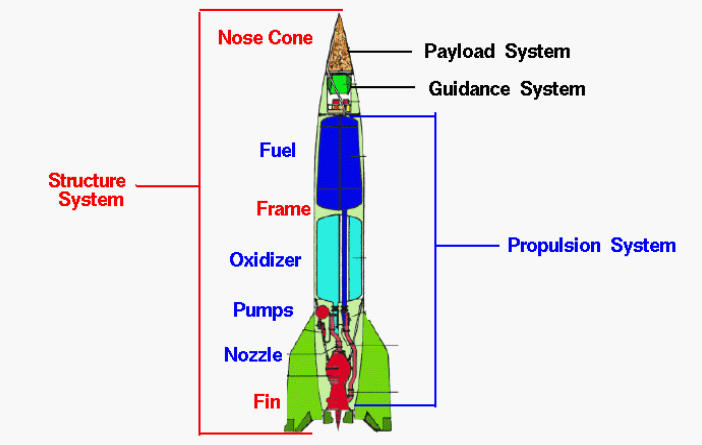
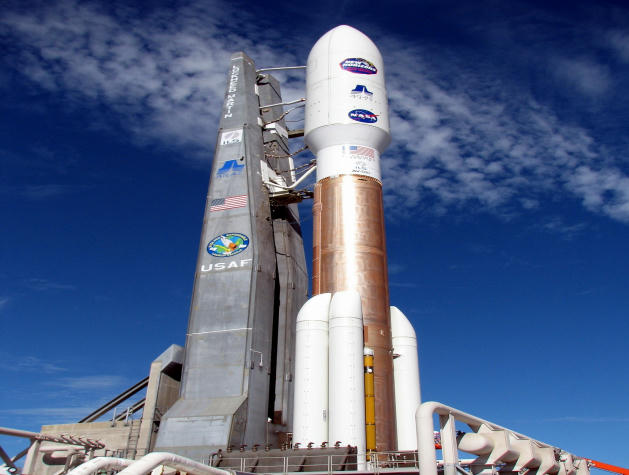
SATELLITE LAUNCHING VEHICLE
- During the 1960s and 1970s, India initiated its own launch vehicle program owing to geopolitical and economic considerations.In the 1960s–1970s, the country developed a sounding rockets programme, and by the 1980s, research had yielded the Satellite Launch Vehicle-3 and the more advanced Augmented Satellite Launch Vehicle (ASLV), complete with operational supporting infrastructure. ISRO further applied its energies to the advancement of launch vehicle technology resulting in the creation of PSLV and GSLV technologies
SATELLITE LAUNCHING VEHICLE
Satellite Launch Vehicle (SLV). The Satellite Launch Vehicle, usually known by its abbreviation SLV or SLV-3 was a 4-stage solid-propellant light launcher. It was intended to reach a height of 500 kilometres (310 miles) and carry a payload of 40 kilograms (88 pounds).Augmented Satellite Launch Vehicle (ASLV). The Augmented Satellite Launch Vehicle, usually known by its abbreviation ASLV was a five-stage solid propellant rocket with the capability of placing a 150-kilogram (330-pound) satellite into Low Earth Orbit.Polar- Satellite Launch Vehicle (PSLV) is an expendable launch system developed by ISRO to allow India to launch its Indian Remote Sensing (IRS) satellites into Sun synchronous orbits
.SATELLITE LAUNCHING VEHICLE
- Geosynchronous Satellite Launch Vehicle (GSLV) is an expendable launch system developed to enable India to launch its INSAT-type satellites into geostationary orbit and to make India less dependent on foreign rockets.The vehicle is built by India, originally with a cryogenic engine purchased from Russia, while the ISRO developed its own cryogenic engine.The first version of the GSLV (GSLV Mk.I), using the Russian cryogenic stage, became operational in 2004, after an unsuccessful first launch in 2001 and a second, successful development launch in 2003.The first attempt to launch the GSLV Mk.II with an Indian built cryogenic engine]
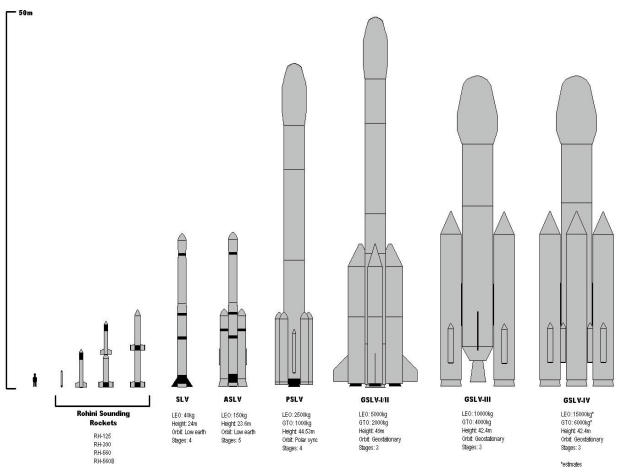
GEOSTATIONARYAND POLAR
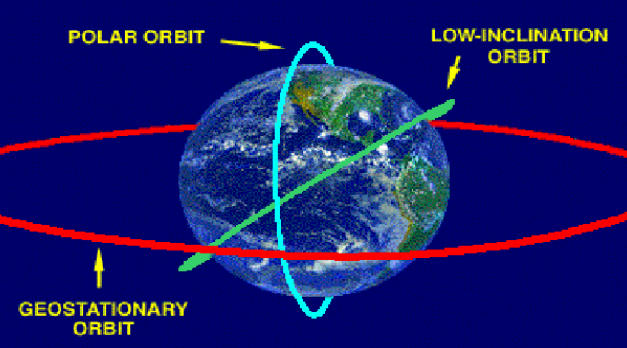
INSAT SERIES
- NSAT (Indian National Satellite System) is a series of multipurpose geostationary satellites launched by ISRO to satisfy the telecommunications, broadcasting, meteorology and search-and-rescue needs of India.
- Commissioned in 1983, INSAT is the largest domestic communication system in the Asia-Pacific Region. It is a joint venture of the Department of Space, Department of Telecommunications, India Meteorological Department, All India Radio and Doordarshan.
IRS
- Indian Remote Sensing satellites (IRS) are a series of earth observation satellites, built, launched and maintained by ISRO.
- The IRS series provides remote sensing services to the country. The Indian Remote Sensing Satellite system is the largest collection of remote sensing satellites for civilian use in operation today in the world.
IRNSS
- IRNSS is an independent regional navigation satellite system being developed by India. It is designed to provide accurate position information service to users in India as well as the region extending up to 1500 km from its boundary, which is its primary service area.
- IRNSS will provide two types of services, namely, Standard Positioning Service (SPS) and Restricted Service (RS).
- It is an autonomous regional satellite navigation system being developed by Indian Space Research Organisation, which is under total control of Indian government.
- The requirement of such a navigation system is driven by the fact that access to Global Navigation Satellite Systems like GPS is not guaranteed in hostile situations.
EXPLORATIONS(CHANDRAYAAN)
- Chandrayaan-1 was India’s first mission to the Moon. The unmanned lunar exploration mission included a lunar orbiter and an impactor called the Moon Impact Probe.
- On 22 October 2008 from Satish Dhawan Space Centre, Sriharikota. The vehicle was inserted into lunar orbit on 8 November 2008. It carried high-resolution remote sensing equipment for visible, near infrared, and soft and hard X-ray frequencies.
- During its 312 days operational period (2 years planned), it surveyed the lunar surface to produce a complete map of its chemical characteristics and 3-dimensional topography.
MANGALYAAN
- The Mars Orbiter Mission (MOM), informally known as Mangalayaan, was launched into Earth orbit on 5 November 2013 by the Indian Space Research Organisation (ISRO) and has entered Mars orbit on 24 September 2014.
- India thus became the first country to enter Mars orbit on its first attempt. It was completed at a record low cost of $74 million.[
- MOM was placed into Mars orbit on 24 September 2014 at 8:23 am IST. The spacecraft had a launch mass of 1,337 kg (2,948 lb), with 15 kg (33 lb) of five scientific instruments as payload.
- The National Space Society awarded the Mars Orbiter Mission team the 2015 Space Pioneer Award in the science and engineering category
TELECOMMUNICATIONS AND RESOURCE MANAGEMENT
- India uses its satellites communication network – one of the largest in the world – for applications such as land management, water resources management, natural disaster forecasting, radio networking, weather forecasting, meteorological imaging and computer communication.
- The IRS satellites have found applications with the Indian Natural Resource Management program, with Regional Remote Sensing Service Centres in five Indian cities, and with Remote Sensing Application Centres in twenty Indian states that use IRS images for economic development applications.
- These include environmental monitoring, analysing soil erosion and the impact of soil conservation measures, forestry management, determining land cover for wildlife sanctuaries, delineating groundwater potential zones, flood inundation mapping, drought monitoring, estimating crop acreage and deriving agricultural production estimates, fisheries monitoring, mining.
DEFENCE
- Integrated Space Cell, under the Integrated Defense Services headquarters of the Indian Ministry of Defense,has been set up to utilize more effectively the country’s space-based assets for military purposes and to look into threats to these assets.
- With 14 satellites, including GSAT-7A for the exclusive military use and the rest as dual use satellites, India has the fourth largest number of satellites active in the sky which includes satellites for the exclusive use of Indian Air Force and Indian Navy respectively.
- GSAT-7A, an advanced military communications satellite exclusively for the Indian Air Force,is similar to Indian navy’s GSAT-7, and GSAT-7A will enhance Network-centric warfare capabilities
SPACE CENTRES
- ISRO:-
- Vikram Sarabhai Space Centre (VSSC), Thiruvananthapuram.
- Liquid Propulsion Systems Centre (LPSC), Thiruvananthapuram.
- Satish Dhawan Space Centre (SDSC-SHAR), Sriharikota.
- ISRO Propulsion Complex (IPRC), Mahendragiri.
- ISRO Satellite Centre (ISAC), Bangalore.
- Space Applications Centre(SAC), Ahmedabad.
- National Remote Sensing Centre (NRSC), Hyderabad.
- ISRO Inertial Systems Unit (IISU), Thiruvananthapuram.
- Development and Educational Communication Unit (DECU), Ahmedabad.
- Master Control Facility (MCF), Hassan, Karnataka.
- ISRO Telemetry, Tracking and Command Network (ISTRAC), Bangalore.
- Laboratory for Electro-Optics Systems (LEOS), Bangalore.
- Indian Institute of Remote Sensing (IIRS), Dehradun.
SPACE CENTRES
- Antrix Corporation – The marketing arm of ISRO, Bangalore.
- Physical Research Laboratory (PRL), Ahmedabad.
- National Atmospheric Research Laboratory (NARL), Gadanki, Andhra pradesh.
- North-Eastern Space Applications Centre (NE-SAC), Umiam.
- Semi-Conductor Laboratory (SCL), Mohali.
- Indian Institute of Space Science and Technology (IIST), Thiruvananthapuram – India’s space university.
ISRO
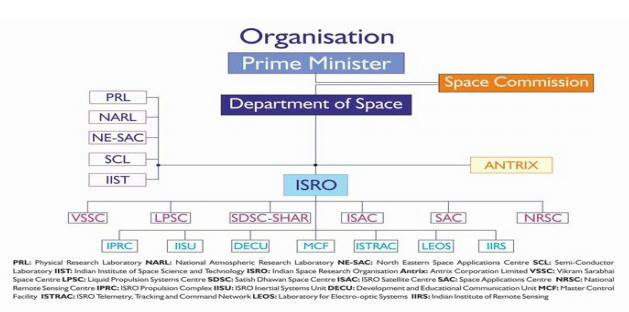
TIMELINE
- Indian Space Programme began at Thumba Equatorial Rocket Launching Station (TERLS) located at Thumba near Thiruvanathapuram in 1962.
- The Satellite Telecommunication Earth Station was set up at Ahmedabad on January 1, 1967. India’s first indigenous sounding rocket, RH-75, was launched on November 20, 1967.
- Aryabhata – First Indian Satellite was launched on April 19, 1975. It was launched from the former Soviet Union.
- During 1975-76, ISRO along with NASA developed means of using space communications system for TV broadcasting. This resulted in the creation of the project Satellite Instructional Television Experiment (SITE).
TIMELINE
- SITE, hailed as ‘the largest sociological experiment in the world’ benefited around 200,000 people, covering 2400 villages of six states and transmitted development oriented programmes using the American Technology Satellite (ATS-6).
- First Experimental launch of SLV-3 with Rohini Technology Payload on board (August 10, 1979). Satellite could not be placed in orbit. Satellite Launch Vehicle-3 (SLV-3) is the first launch vehicle of India.
- Second Experimental launch of SLV-3, Rohini satellite successfully placed in orbit. (July 18, 1980).
- Indian National Satellite system (INSAT)-1A was launched on April 10, 1982. This system was for the communication, broadcasting and meteorology.
TIMELINE
- On April 2, 1984, the first Indo-Soviet manned space mission was launched. Rakesh Sharma became the first Indian citizen to go into space.
- The first operational Indian Remote Sensing Satellite, IRS-1A was launched on March 17, 1988. On March 24, 1987, the first developmental launch of Augmented Satellite Launch Vehicle (ASLV).
- The first developmental launch of Geosynchronous Satellite Launch Vehicle (GSLV)-D1 with GSAT-1 on board took off from Sriharikota on April 18, 2001.
- PSLV-C11 successfully launches CHANDRAYAAN-1 from Sriharikota on October 22, 2008.
TIMELINE
- November 5, 2013 – PSLV – C25 successfully launches Mars Orbiter Mission (Mangalyaan) Spacecraft from Sriharikota.
- On February 15, 2017, PSLV-C37, the 39th mission of the workhorse launch vehicle of ISRO, injected ISRO’s Cartosat-2 Series Satellite weighing 714 kg and two ISRO Nano-satellites namely INS-1A (8.4 kg) & INS-1B (9.7 kg) and 101 Nano-satellites.
- India’s latest communication satellite, GSAT-17 was inducted into the INSAT/GSAT system on June 29, 2017 from Kourou, French Guiana by Ariane-5 VA-238. GSAT-17 also carries equipment for metereological data relay.
- PSLV-C42 Successfully Launches two foreign satellites from Satish Dhawan Space Centre (SDSC), SHAR, Sriharikota on September 16, 2018.

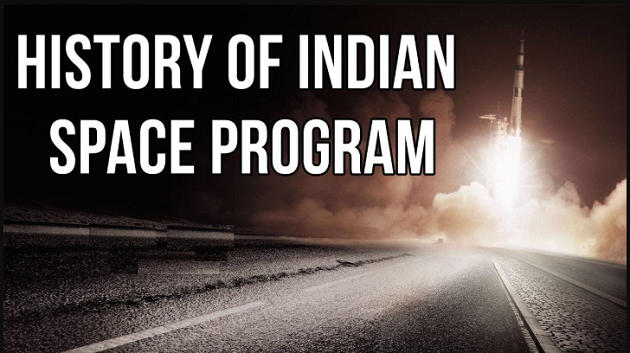






















 WhatsApp
WhatsApp